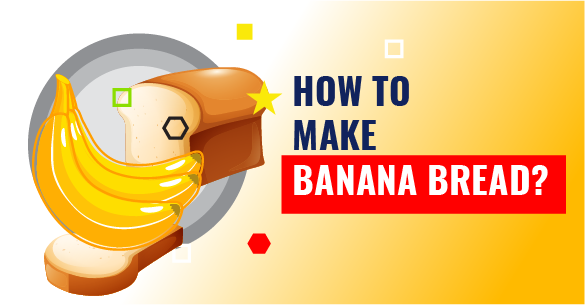Those above. However, the most critical taste in banana bread—which, unsurprisingly, is banana—is what will make or break your loaf. Therefore, you must use the "proper" bananas to produce phenomenal banana bread.
You are standing in your local supermarket's produce area and admiring the bananas. They come in large and small sizes: adorable tiny bunches of mini-bananas and organic bananas.
Which one do you select?
Look for overripe bananas.
Find a produce cart with discounted items such as damaged apples, soft lemons, wilted lettuce, and "overripe" bananas by looking past the "perfect" bananas. The banana's taste is sweeter and stronger the darker it is; a banana that is much too soft and mushy for your breakfast is ideal for banana bread.
You'll need to make your ripe bananas if you can't locate any. Purchase some bananas, generally found in most stores, with a stem end that is yellowish-green or yellow and stained with green.
Although these bananas may be a little too ripe for your breakfast, they are just starting to show their true potential for banana bread.
At room temperature, let the bananas ripen (and overripen). This might take a few days or a week, depending on the weather.
Black bananas work best for banana bread, not yellow ones. The stem has the slightest trace of green, or they at least have black/brown streaks. When cooking banana bread, there is no such thing as a too-ripe banana, so the darker, the better.
This is a nuisance if you don't often plan your baking tasks out far in advance and need to prepare banana bread immediately. It always pays to have a supply of ripe bananas in your freezer if you're a last-minute baker.
Gather a supply of overripe bananas to freeze.
How does it function? Put a banana in the freezer when you see one in the fruit bowl, tipping just so and heading toward Fruit Fly Central. I keep a zip-top plastic bag in my freezer just for this use.
It's OK if frozen bananas become dark brown or black. Please remove the bananas you need and let them thaw at room temperature before using them in baking. Alternately, you may defrost four medium bananas in my microwave in approximately 3 minutes (skin and all).
Again, no concerns; thawed bananas are very squishy and watery. Slit the black bananas' skins lengthwise, then squeeze the soft fruit into a measuring cup (if you bake by weight) or mixing bowl. They will be highly pliable and simple to mash. Don't forget the liquid.
As if packing a toothpaste tube, you may slice off the tip and squeeze the mushy banana into your bowl or cup.
Warning: Do not follow internet instructions to roast underripe bananas in their peel for 30 minutes at 350°F. Their taste should be concentrated, and they should become sweet. I bit on one, and although they were dark black, the flavor was mushy green bananas. Avoid going there.
What if you need to prepare banana bread right now because your closest friend is coming over, and you told her you would? Yet you do not have any overripe bananas?
Make use of any available bananas. To help compensate for the lack of sweetness, increase the sugar in the recipe by around 15% (usually 2 to 3 tablespoons), and up the salt by about 25% (to aid flavor intensity).
The perfectly green bananas you sometimes see at the grocery store are an exception to this rule. In that case, prepare pumpkin bread and call it a day if that's all you can find.







0 Comments